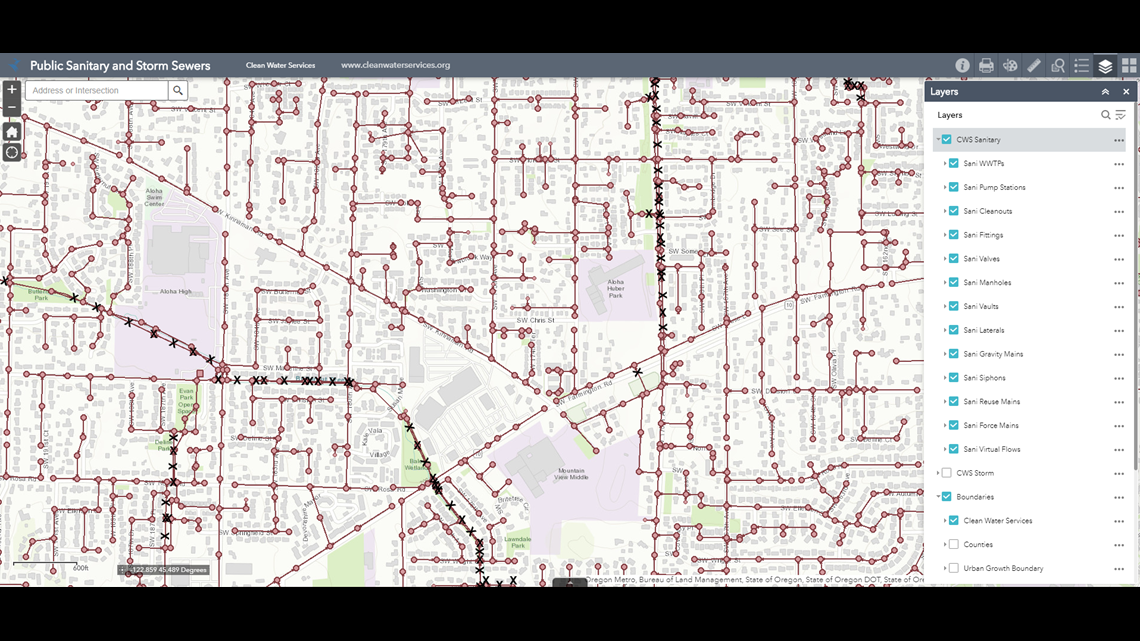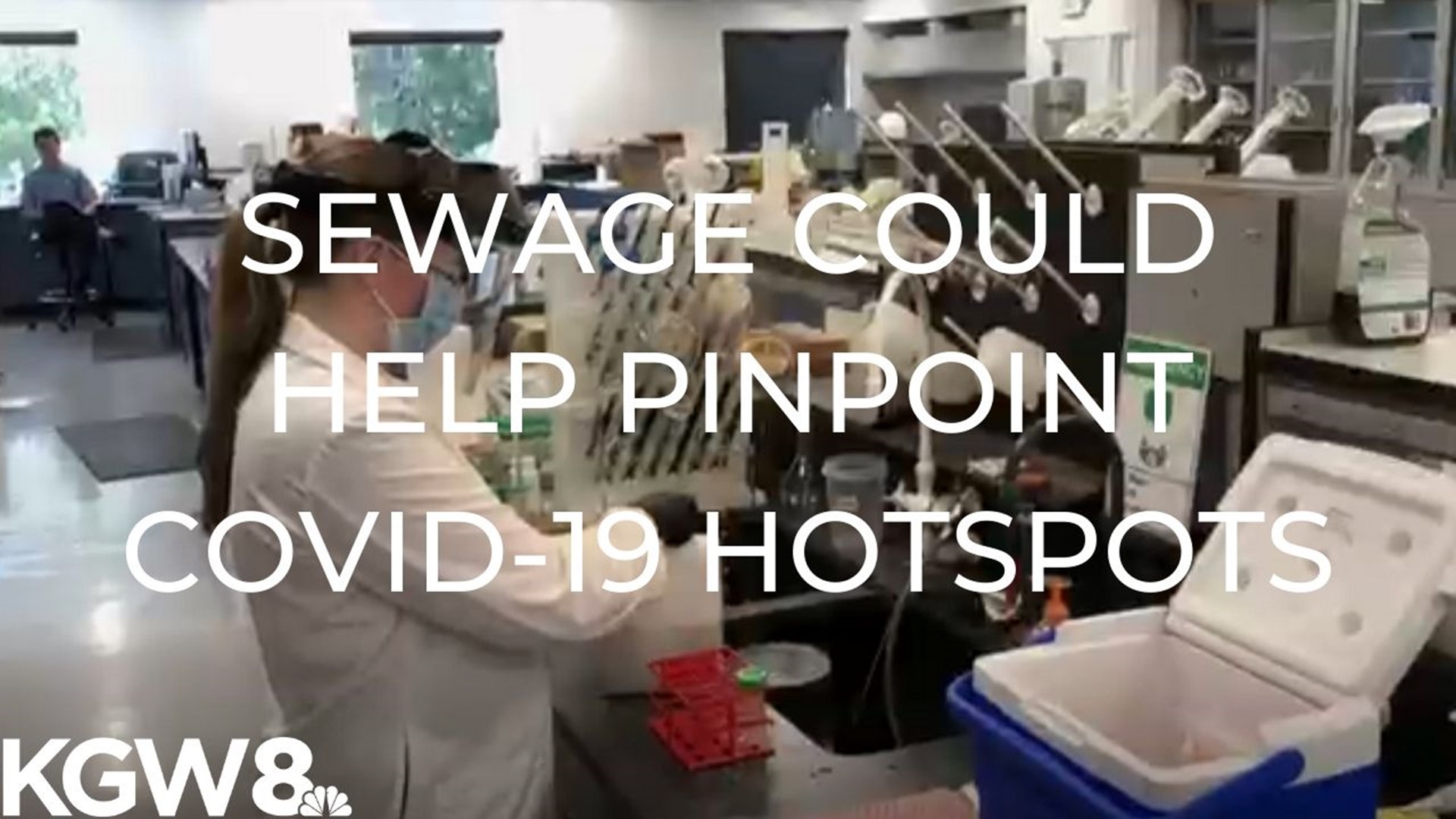PORTLAND, Ore. — You’ve probably heard that pharmaceutical drugs or caffeine can be detected in our wastewater (we’re talking sewage here). But now, about 100 wastewater treatment plants across the U.S. are actively testing for the presence of COVID-19 in their sewer systems.
Two local companies are taking part in the 12-week study: the city of Albany and Clean Water Services of Washington County.
Once a week, samples are taken, they’re concentrated, pasteurized--just enough for safe handling--and shipped overnight to a company called BioBot.
BioBot is the MIT spinoff that’s running this national trial. They’re still trying to fine-tune their math to figure out what the concentrations of the virus in those samples equates to in real numbers of people infected.
CWS collects and cleans wastewater from 600,000 Washington County residents at four treatment plants in Forest Grove, Hillsboro and Tigard. That’s casting a wide net.


CWS Director of Research and Innovation Dr. Ken Williamson says they've already gotten their first set of results back, and they are able to identify the virus in samples from all four treatment facilities.
But he wants to do more, and this is where it gets really interesting, and potentially really valuable to public health officials.
CWS is partnering with Oregon State University for hyperlocal testing, with a goal of narrowing down the source of the viral sewage to a specific neighborhood, a street, maybe even a building, like an assisted living center or a school.
CWS maintains nearly 2,000 miles of sewer pipe in Washington County, they have lots of access. The team could pull this off right away, and they hope to secure funding from the National Science Foundation within the next two weeks so they can formally begin this part of their study.
Without widespread testing, this might be our best option to find hot zones and contain them as they spring up.
Chris McGinness is a meteorologist and transportation reporter for KGW. Got a story idea or a great photo you want to share? Email me at cmcginness@kgw.com or reach out on Facebook , Twitter and Instagram

